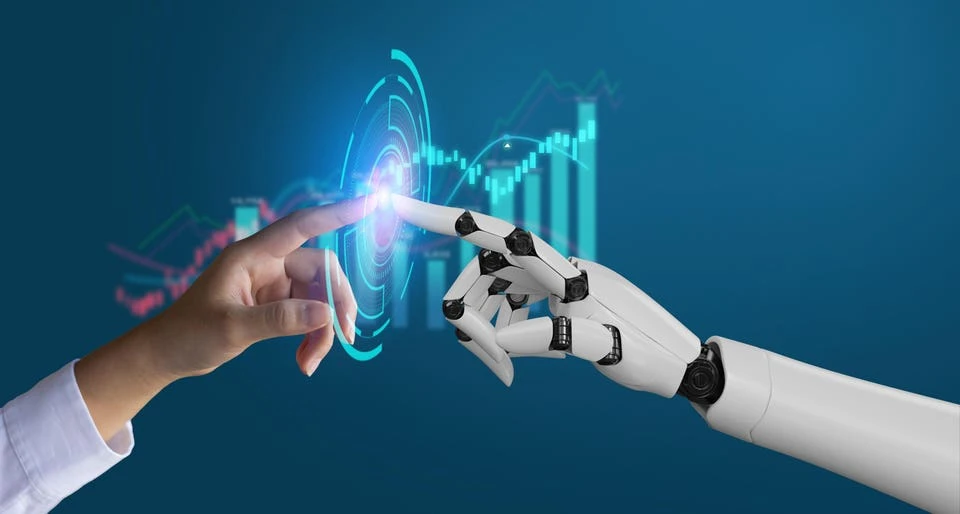Eye floaters Have you ever noticed specks or strings drifting across your vision?
If so, you may be one of worldwide who experience eye floaters at some point.
While this condition is not typically considered severe, it can still be frustrating and uncomfortable, affecting your vision and quality of life.
Usually, the brain ignores these floaters, and they go unnoticed.
However, when they increase in number or become more concentrated in a particular area, they can cause annoyance or discomfort.
There are several treatments available to help ease the symptoms of eye floaters.
This article will discuss the different options and advances in artificial intelligence that can educate patients and enhance the management of this common condition.
What are Floaters?
Eye floaters are specks or strands that can appear in the field of vision and move around when the eyes move.
These floaters are caused by the shrinking of the vitreous, a gel-like substance that fills the eye.
The vitreous becomes more liquid and less gel-like as we age, causing the collagen fibers to clump together and form specks or strands.
Diagram of floaters but Exeter Eye While most floaters are harmless and do not require treatment, some may indicate a severe eye condition, such as retinal detachment or inflammation.
Aside from that, eye floaters can be distracting and, at times, concerning significantly when their numbers increase.
Some individuals may experience significant interference with their vision, compromising their quality of life and overall well-being.
Treating Eye Floaters Fortunately, several current treatments address eye floaters, with various approaches depending on the individual’s condition and overall severity of symptoms.
Laser Floater Treatment (LFT) is a non-surgical procedure performed in the office that is used as one of the current treatments for eye floaters.
LFT uses laser light to dissolve eye floaters, reducing their visibility in the patient’s field of vision.
It has emerged as a viable alternative for people who are hesitant to undergo surgery, as it poses minimal risk of complications and is a less invasive option than surgical treatments.
Studies have shown that LFT is effective in treating eye floaters.
, which assessed the safety and effectiveness of YAG laser vitreolysis as a treatment for vitreous floaters, concluded that LFT is a suitable option for patients hesitant to undergo surgery due to its minimal risk of complications.
The study also found that LFT shows promising results in improving subjective and objective outcomes for symptomatic floaters.
However, given the limited available evidence, further research is needed to determine the exact role of YAG laser vitreolysis in treating vitreous floaters.
Another current treatment option for eye floaters is vitrectomy, a surgical procedure that involves removing the vitreous, the jelly-like substance inside the eye where the floaters are suspended.
This approach is relatively uncommon and is typically reserved for extreme cases where the floaters interfere significantly with the individual’s vision.
Vitrectomy carries some risks, including infection and retinal detachment.
Eye floaters can also be treated through medical management and patient education, especially if an underlying medical condition causes them.
For instance, if the floaters result from inflammation or bleeding due to diabetes, controlling or treating the underlying condition can help alleviate the floaters.
The Role of Patient Education in Treating Floaters Educating patients regarding eye floaters and related disorders is paramount to successful treatment.
Patients should understand the condition, including its causes and available treatment options.
Additionally, they should be informed about the risk factors, such as age, eye trauma, and specific medical conditions that can lead to eye floaters.
By being mindful of these risk factors, patients can take preventative measures to avoid the development of eye floaters.
examined AI chatbots for patient education on retinal floaters.
The study assessed multiple AI chatbots and their ability to help provide practical and actionable patient education.
It also highlights AI systems’ accuracy in answering questions related to floaters from a retinal specialist point of view.
The researchers found that both ChatGPT™ and Google Assistant™ had weak scores, indicating the bots were inadequate in providing in-depth specialist information.
Additionally, while AI chatbots can be a helpful tool for patient education, they should not replace the need for a qualified healthcare professional.
Patients must be encouraged to seek medical advice and not rely solely on AI chatbots for diagnosis and treatment.
To a Clearer Future Eye floaters are a common condition that can be uncomfortable and negatively impact one’s quality of life significantly as the number of floaters increases.
Fortunately, several treatments are available for eye floaters, including Laser Floater Treatment (LFT).
Studies show that LFT effectively treats vitreous floaters and has promising results in improving subjective and objective outcomes for symptomatic floaters.
As technology advances and shapes the healthcare industry, the future of eye floater treatment looks promising.
Integrating artificial intelligence and human expertise can improve patient care by providing accurate and tailored information and guidance to patients and caregivers, helping them make informed decisions about their health.
We can look forward to a future where AI and human expertise work together to provide the best possible patient care.
To learn more about the eye, read more stories at
In 2023, artificial intelligence and generative AI were pushed into the spotlight when OpenAI commoditized them.
In a short time, products like ChatGPT and copilot tools, built on generative AI, progressed user productivity and minimized the time invested to perform basic tasks.
As a basic example, users can now swiftly edit an email for grammatical errors using tools such as Grammarly, illustrating the efficiency gains achieved through AI.
Beyond productivity, these advances are transforming information into a company-wide commodity—ensuring widespread accessibility and further elevating overall efficiency.
As organizations continue to leverage tech to power improved efficiency and productivity, here are three predictions I’ll be watching as we head into 2024.
1.
The use of speech and bots will influence the trajectory of low-code development.
Low-code development isn’t coming; it’s already here.
Gartner, Inc. that “by 2025, 70% of new applications developed by organizations will use low-code or no-code technologies.”
This phenomenon has enabled business technologists with little or no coding know-how to create solutions that help their organizations meet their business needs.
Now, as AI is integrated into low-code platforms, I foresee a transition toward building applications using natural language or bots rather than further maturity in traditional low-code interfaces.
This is one of the most promising developments in this space, in my opinion, and it’s likely to continue its upward trajectory and ultimately contribute to a notable advancement in the maturity of low-code development.
I predict that in the next few years, a substantial number of individuals will opt to leverage low-code and no-code platforms specifically to automate tasks through bots rather than the conventional use of low-code and no-code for automation.
As the technology becomes more sophisticated, adoption will continue to rise, and ROI will improve as AI-driven capabilities evolve.
2. Generative AI copilots will become a norm across the IT landscape.
As the adoption of generative AI broadens, I anticipate widespread integration of tools such as Copilot across various domains—encompassing automation, iPaaS, API management, low-code platforms, application development and other related products.
This extends to its utilization in security operations (SecOps), artificial intelligence operations (AIOps), DevOps and various facets of automation.
In essence, Copilot is poised to become ubiquitous across diverse technological landscapes, which will play a significant role in making teams much more productive.
3. Real-time speech translation will take center stage.
If 2023 was the year of generative AI and large language models, then meaningful advances in real-time voice and speech translation will define the next few years.
In today’s globalized workforce, it’s not uncommon for professionals to collaborate and communicate across borders—even when they don’t speak the same language.
While it may be relatively straightforward when teams from English-speaking countries like the U.S., Canada, the U.K. or India collaborate, challenges arise when additional colleagues from countries such as France, Brazil or China are involved.
Manual translation of languages is time-consuming, but new and emerging AI capabilities are poised to make this hurdle a thing of the past.
Progress is already being made.
Meta released a speech-to-text model that can translate nearly 100 languages as the company continues to try to make a .
Real-time speech translation can not only enhance efficiency and productivity but also empower businesses to expand their global operations more effectively.
When you package these three predictions together, a common theme emerges: productivity.
Taking a step back and looking at the bigger picture reveals that organizations of all sizes and across industries are looking for ways to embrace AI and automation in a way that makes them more efficient and allows them to intensify their focus on their ultimate business goals.
While these technologies may not fully hit their primes in 2024, they should advance enough for businesses to use them in meaningful ways that drive their organizations forward.
Ultimately, substantial progress across the areas described above will contribute to the hyperautomation of businesses.
AI has the potential to transform how businesses function, improving automation in multiple areas.
With its ability to identify, vet and automate complex tasks and processes at an unprecedented pace, AI will create a critical inflection point in the coming year.
I’m excited to see how the future unfolds as AI becomes instrumental in discovering better business processes, identifying potential automation opportunities and prioritizing tasks based on their ROI.
is an invitation-only community for world-class CIOs, CTOs and technology executives.
Source: forbes







No Comments